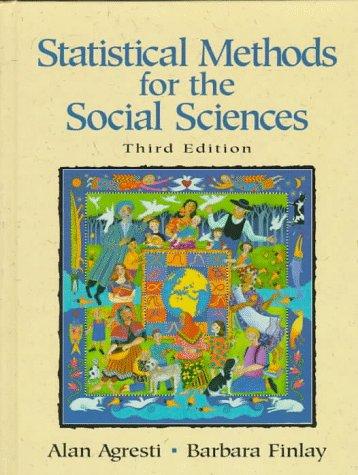3. Based on a national survey Table 13.14 shows results of a prediction equation (ignoring some nonsignificant
Question:
3. Based on a national survey Table 13.14 shows results of a prediction equation (ignoring some nonsignificant vanables) reported for the response variable. Y = alcohol consump- tion, measured as the number of alcoholic drinks the subject drank during the past month (D. Umberson and M Chen, American Sociological Review, Vol. 59, 1994, p 152)
a) Setting up dummy variables F for whether father died in the past three years. C for gender, and (M). M M3) for the four categones of marital status, and letting X = alco- hol consumption three years ago. report the prediction equation.
b) Find the predicted alcohol consumption for a divorced inale whose father died in the previous three years and whose consumption three years previously was ten drinks per month.
c) Interpret the coefficient of gender
d) The sample size was 1417 Test the null hypothesis that gender has no effect on the response, controlling for the other predictors. Interpret.
TABLE 13.14 Explanatory Variable Estimate Std Error Death of father (0 = no) 98 2.9 Gender (0 = male) -53 1.6 Mantal status (0=married) Divorced, separated 7.0 2.0 Widowed 2.0 36 Never married 12 2.4 Alcohol consumption. 501 .023 three years ago Intercept 8.3
e) Construct a 95% confidence interval describing the true effect of gender, controlling for the other predictors Interpret
f) Marital status has three estimates. Dividing the coefficient of the divorced dummy vari- able by its standard error yields a statistic. What hypothesis does it test" What would one need to do to test the effect of marital status on the response, controlling for the other variables?
Step by Step Answer:

Statistical Methods For The Social Sciences
ISBN: 9780135265260
3rd Edition
Authors: Alan Agresti, Barbara Finlay





